Family: Marriage
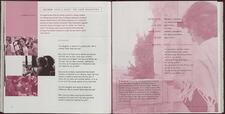
Feminist Jewish Ritual: An International Perspective
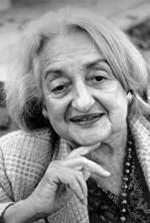
Betty Friedan

Abraham Geiger
Abraham Geiger (1810-1874) was one of the most influential Jewish thinkers of the nineteenth century. He was one of the major intellectual leaders and founders of the Reform movement in Germany and a strong supporter of Jews entering European society. As part of his vision of Judaism, he argued for a Judaism oriented around the home and domestic life, but also a Judaism that both elevated and sidelined the women that had long created that domestic life.

German Immigrant Period in the United States
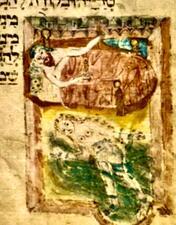
German-Jewish Pietists: Attitudes towards Women
Despite their small numbers, the introspective and penitential religious outlook of the German-Jewish Piestists had a significant and lasting impact on European Jewry. Written by men and intended for a male audience, the Pietists’ writings heighten the profound ambivalence toward women that is inherent in the rabbinic tradition
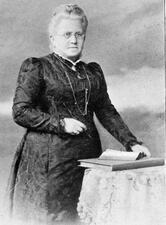
Germany: 1750-1945
The Jewish Reform movement did not liberate women from their subordinate religious status, and the nineteenth-century bourgeois German family ideal with its rigid gender roles soon eclipsed the fluid structure of premodern Jewish families. Jewish women were expected to transmit German bourgeois values while also shaping their children’s Jewish identity.

Louise Glück
Louise Glück, American poet, essayist, and educator, was the recipient of the 2020 Nobel Prize in Literature, as well as numerous other awards for her writing; she also served as poet laureate of the United States from 2003 to 2004. One finds the personal, the mythological, and the Biblical woven intricately throughout Glück’s oeuvre.

Glueckel of Hameln
Born into an affluent family in Hamburg, Glückel of Hameln became the business partner of her beloved first husband. She began writing memoirs in 1691, after her husband’s death. These memoirs are incredibly detailed, combining a meticulous record of her life and descriptions of events that occurred in local Jewish communities. Her memoirs are both a singularly important social and historical document and one of the greatest literary achievements of Ashkenazi prose–in Yiddish or Hebrew–at least until the end of the eighteenth century.
Gomer, daughter of Diblaim: Midrash and Aggadah
According to the Rabbis, God commanded Hosea to marry Gomer, the daughter of Diblaim, to teach him proper conduct for one who was to prophesy to Israel. Despite Gomer’s harlotry, the rabbis interpret her story as proof that, even when God is angry with Israel, God still loves Israel.
Gomer: Bible
The prophet Hosea uses his adulterous wife Gomer as a metaphor for God as the faithful husband to Israel. Gomer and Hosea’s relationship shows how women were ostracized for extramarital sex while such behavior was tolerated if not encouraged in men, paralleling the relationship between Israel and God. It is difficult, however, to separate historical facts about the couple’s domestic problems from the theological message expressed through them.
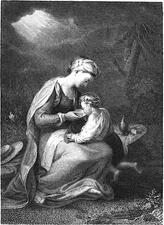
Hagar: Bible
Hagar is Sarah’s Egyptian slave woman, whom Sarah gives to Abraham as secondary wife and who would bear a child for him. After Hagar becomes pregnant, Sarah treats her harshly. Eventually Hagar flees from her mistress into the wilderness, where God’s messenger speaks to her. Hagar has long represented the plight of the foreigner, the slave, and the sexually abused woman.

Hagar: Midrash and Aggadah
Hagar is the subject of much interpretation by the rabbis, who portray her as a spiritual and even righteous woman. The rabbis often depict her relationship with Sarah as harmful and fractious, though some traditions identify her with Keturah, taken as a wife by Abraham in Gen. 25:1; in this interpretation, after their divorce she remarried Abraham after Sarah’s death.
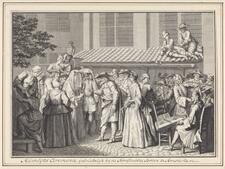
Halakhic Decisions on Family Matters in Medieval Jewish Society
Across the medieval Jewish world, rabbis used takkanot (rabbinic decrees) to address urgent needs in family life among their Jewish communities. These takkanot are key historical sources for understanding the changing roles of women in the medieval Jewish world.
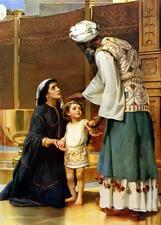
Hannah: Bible
Hannah, the second and barren yet preferred wife of Elkanah, promises to return her child to YHWH if he grants her a son. Her prayers are answered, and she follows through on her pledge to YHWH. Hannah’s narrative emphasizes the importance of fertility and childbirth in Israeli artistic narratives and presents a portrayal of an independent and resourceful woman.

Hannah: Midrash and Aggadah
Hannah is depicted by the Rabbis as a righteous woman who was devout in her observance of the commandments and tested by God through her infertility. Her story is the basis for much of the rabbinic conception and rules of prayer.
Hasidic Hebrew Fiction: Portrayal of Women
Hundreds of compilations of Hasidic literature, a genre derived from oral traditions, were published in Eastern Europe between the start of the nineteenth century and the outbreak of World War II. The image of “woman” varies in Hasidic literature according to the character in the story, its narrator, and its setting in time and place; therefore we can only refer to individual women, each on her own, and not to woman in general or women as a gender.
Hasidism

Haskalah Attitudes Toward Women
Just as the many well-known thinkers of the Enlightenment debated the proper role of women in society, so did the maskilim, the men of intellect who burst upon Ashkenazi Jewish society in the eighteenth- and nineteenth-century revolution known as Haskalah. Dominated by men, the movement critiqued Jewish tradition and encouraged modernity among Jews, but simultaneously met Jewish women’s pursuit of modernity with ambivalence.
Haskalah Literature: Portrayal of Women
The image of women in Haskalah literature reflects the relationship between the sexes in eighteenth- and nineteenth-century Ashkenazi Jewish society and European culture. But Haskalah writers wished to shape new patterns of male-female relationships among their reading public; to change, at least partly, the attitude of men towards women; and to ‘improve’ women’s conduct within the home and community.
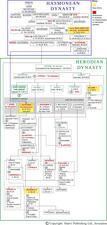
Hasmonean Women
Though few of their names were documented, the women of the Hasmonean family were important figures in political and familial affairs during the second and first centuries BCE.

Herodian Women
The Herodian dynasty produced a large number of seemingly impressive women, whose stories are recorded in Josephus’ writings. This article summarizes the lives of Cyprus (I), Pheroras’ Wife, Doris, Mariamme, Glaphyra, Berenice (I), Herodias, Salome (II), Cyprus (II), and Drusilla.

Libby Holman
Singer and actress Libby Holman was known as much for her scandalous personal life and revolutionary activism as for her lush voice. She grew famous performing in Broadway shows and revues throughout the 1920s. Holman was openly bisexual and was accused of murdering her husband, Zachary Smith Reynolds, in 1932. She was actively involved in protesting racial segregation.
Holocaust Survivors: Rescue and Resettlement in the United States
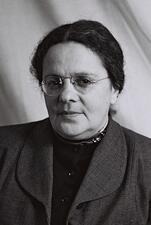
Beba Idelson
Beba Idelson was an Israeli politician and dedicated Zionist activist. She served as a member of the Knesset for sixteen years and was instrumental in shaping the character of the State of Israel, especially as it pertained to women’s rights.
Iggeret Ha-Kodesh
The Iggeret ha-Kodesh is a Kabbalistic work with contested authorship, written in the second half of the twelfth century. The work is a kabbalistic interpretation of sexual relations and its sacred spirituality between a married couple.


